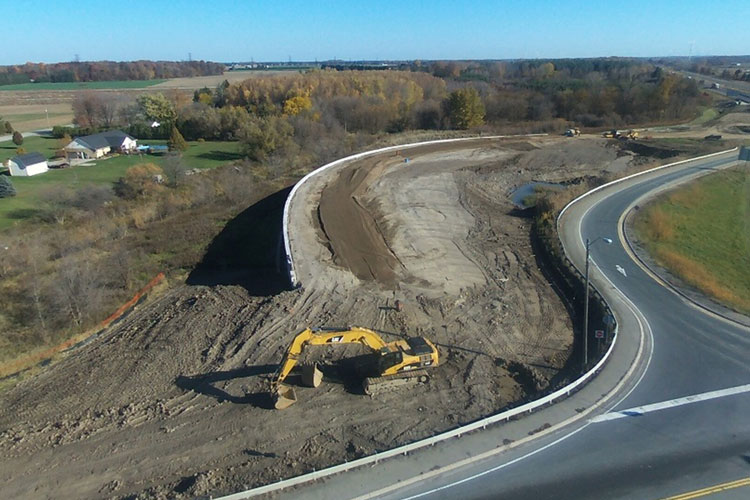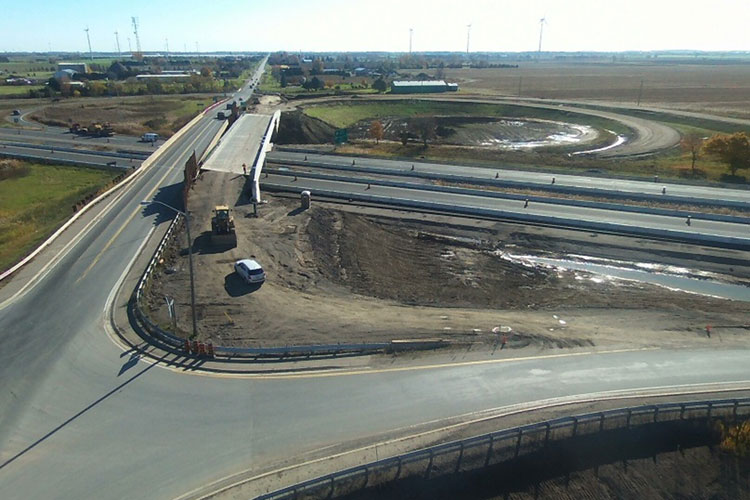Highway 401 & 40
Client
MTO
Duration
March 2016 - June 2018
Delivery Model
Construction Management
contract value
$61.9 M
Project Overview
This project included the Highway 401 and Highway 40 interchange reconfiguration, Highway 401 Reconstruction, and the realignment of Pinehurst Line in the Municipality of Chatham-Kent. It was a major civil engineering initiative by the Province of Ontario as part of the Highway 401 Windsor to London Corridor Improvements.
The work included the construction of a Parclo A-4 interchange configuration that accommodates Long Combination Vehicles (LCVs) and the future widening of Highway 401 to eight lanes, as well as the reconstruction of 8.9 km of Highway 401 eastbound lanes. The project was completed using a CMGC delivery model. GIP (formerly Coco Paving) and their key subcontractor (Facca) worked collaboratively with the Lead Designer (Dillon), Geotechnical Lead (Golder), and MTO as a “Project Team” to function as an integrated design-build team throughout the design and construction phases of the project.
The project included design and construction phases for the following scope of the work: excavation and grading, drainage, significant structural replacements and rehabilitations, granular base, concrete barrier wall, concrete paving, hot mix paving, electrical, landscaping, environmental management such as mitigation measures for species at risk, mussels, turtles, and snakes, and traffic management along a linear corridor.
Key Challenges and Solutions Implemented
Utility Relocations/ Property Acquisitions
The utility relocations both within the project limits and along the detour routes, as well as property acquisitions along the detour route, were a significant challenge on this project given the risk to the project schedule if these were not completed in time to commence construction. The project team worked diligently to mitigate the risk and ensure that construction would not be delayed by:
- Preparing a risk registry to identify and manage each utility relocation and property acquisition;
- Meeting bi-weekly to review and update the risk registry and identify areas of concern;
- Meeting regularly with the various utility companies to review and fast-track design and construction schedules.



